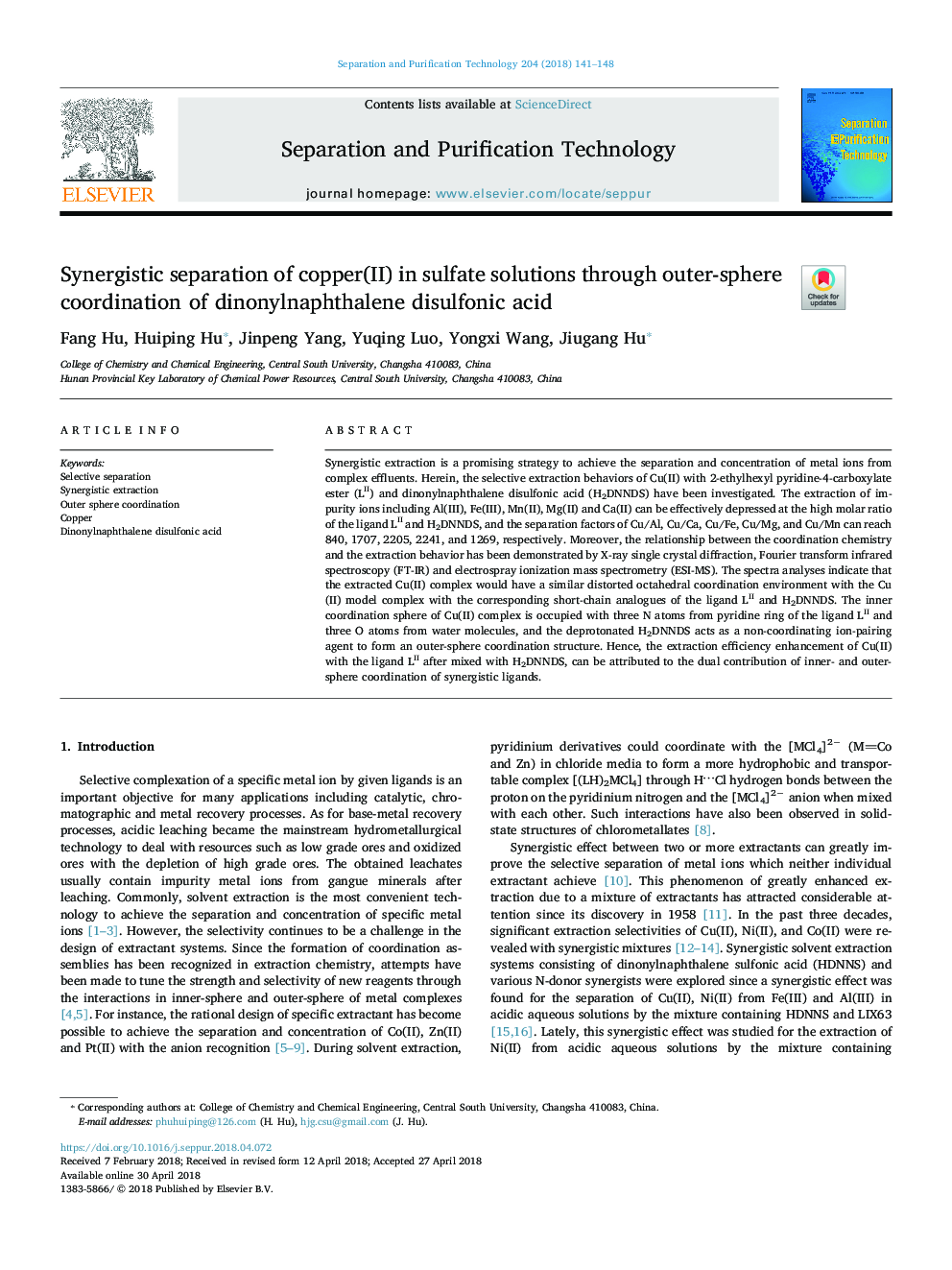| Article ID | Journal | Published Year | Pages | File Type |
|---|---|---|---|---|
| 7043655 | Separation and Purification Technology | 2018 | 8 Pages |
Abstract
Synergistic extraction is a promising strategy to achieve the separation and concentration of metal ions from complex effluents. Herein, the selective extraction behaviors of Cu(II) with 2-ethylhexyl pyridine-4-carboxylate ester (LII) and dinonylnaphthalene disulfonic acid (H2DNNDS) have been investigated. The extraction of impurity ions including Al(III), Fe(III), Mn(II), Mg(II) and Ca(II) can be effectively depressed at the high molar ratio of the ligand LII and H2DNNDS, and the separation factors of Cu/Al, Cu/Ca, Cu/Fe, Cu/Mg, and Cu/Mn can reach 840, 1707, 2205, 2241, and 1269, respectively. Moreover, the relationship between the coordination chemistry and the extraction behavior has been demonstrated by X-ray single crystal diffraction, Fourier transform infrared spectroscopy (FT-IR) and electrospray ionization mass spectrometry (ESI-MS). The spectra analyses indicate that the extracted Cu(II) complex would have a similar distorted octahedral coordination environment with the Cu(II) model complex with the corresponding short-chain analogues of the ligand LII and H2DNNDS. The inner coordination sphere of Cu(II) complex is occupied with three N atoms from pyridine ring of the ligand LII and three O atoms from water molecules, and the deprotonated H2DNNDS acts as a non-coordinating ion-pairing agent to form an outer-sphere coordination structure. Hence, the extraction efficiency enhancement of Cu(II) with the ligand LII after mixed with H2DNNDS, can be attributed to the dual contribution of inner- and outer-sphere coordination of synergistic ligands.
Related Topics
Physical Sciences and Engineering
Chemical Engineering
Filtration and Separation
Authors
Fang Hu, Huiping Hu, Jinpeng Yang, Yuqing Luo, Yongxi Wang, Jiugang Hu,
